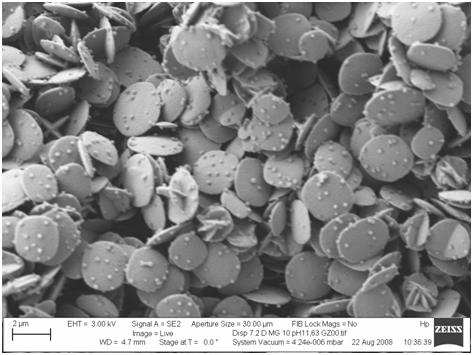Synthesis of stabilizer free block copolymer dispersion followed by mineralization
Background and aims
Because of their structural and mechanical properties inorganic/organic hybrid materials are interesting for the material research. Role models of such materials can be found in nature. The most famous example is probably the seashell which has through its special layer structure consisting of successive organic biopolymer and calcium carbonate an extremely high breaking resistance. The breaking resistance of the seashell is 3000 times higher than that of the main component calcium carbonate. Also, the shimmer of the mother of pearl is an interesting side effect of the specific inorganic/organic layer structure.
The aim of the project is to develop methods transferring the principles of natural hybrid materials to plastics and coating materials.
Results
Block copolymer dispersion are synthesized by the use of the DPE method. The particle creation and particle growth are controlled by light scattering. The functionalities of the surface of these dispersions can be adjusted as desired. In the next step, the mineralization of calcium carbonate or barium sulfate is the synthesis of new hybrid materials. These new materials are analyzed by scanning electron microscopy and focused ion beam. E.g.: Amorphous calcium carbonate is produced with embedded dispersion particles. Furthermore, new nanoscale barium sulfate flakes with integrated dispersion particles can be produced.
Using various mineralization techniques, like e.g. the PILP (Polymer Induced Liquid Precursor) method or the double diffusion, special melamine resin/calcium carbonate layer structures (see melamine resins) or block copolymer membranes filled with barium sulfate or calcium carbonate can be produced.


